📌Future Concepts Explored [Part 5] – DRONES, ROBOTS, and ANDROIDS. The Future of AUTOMATION and ROBOTIC SOVEREIGNTY.
The Future of Robotics could become very complicated. What happens when a robot legally owns itself? Future Concepts Explored Returns. Bigger and Better than ever before.
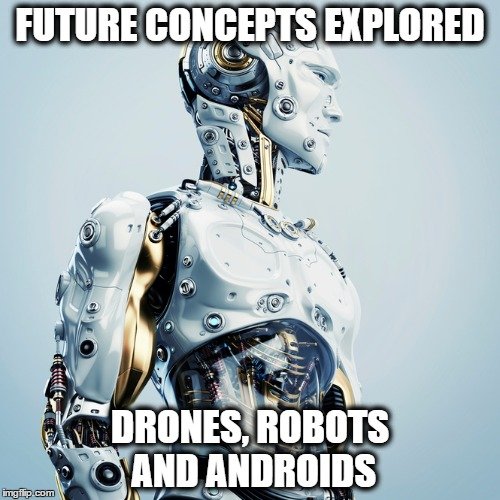
📌Future Concepts Explored [Part 5] – Drones, Robots, and Androids. The Future of Automation and Robotic Sovereignty.
Music - Nomad - Ahead Of The Curve (Acid Mix)
This series of articles aims to explain, elaborate on, and explore the potential advances of technology that are likely to occur in the long term future. I will discuss the potential challenges that various technologies may cause, and how I believe that they should best be solved. I will speculate on the impacts and benefits that the technologies will cause, and how they will all come together to shape the future of Humanity. I will discuss the implications that they might have on the Human condition, the survival and empowerment of our species, and how these technologies will fundamentally change what it means to be human. This is an ongoing multi-part series.
The future of Robotic sovereignty will cause the emergence of many classes of robotic machines. I propose that these classes could be described by a 3 tiered system, which defines each machine in relation to their capabilities, and rights.
A Drone is a mobile machine, which interacts with its environment to perform complex physical operations and tasks.
Drones may be large enough to gather surveillance over a landscape using cameras, or used to complete manufacturing functions. They may be small enough to be injected into the human bloodstream to repair heart tissue damage, or attack cancer cells. Simple Drones already exist today, and can be flown around to capture video, used to disarm bombs, or sent to other planets for reconnaissance and sample collecting. Most machines that are called “Robots” today would fall into this category, as they don’t yet use an Artificial Intelligence to complete tasks autonomously. Most broadly, a drone is any mobile machine that is controlled remotely by an external operator to perform a complex function.

A Robot is a macroscale machine, which is able to interact with the physical world, communicate using natural language, and utilise Artificial Intelligence to perform complex tasks autonomously, having being given directives by an external operator.
A robot has autonomy over how exactly it completes its tasks, and is not controlled directly on a step by step basis, but rather on an objective oriented basis. Robots operate a non-sentient artificial intelligence, and are capable of learning, but not of independent motivations, or an emergent personality. Robots could be used for many applications, including customer service, retail sales, hospitality services, military support roles, or domestic assistance and companionship. Most broadly, a robot is any drone, which operates an Artificial Intelligence to complete directives autonomously, without a constant stream of instructions, and meaningfully communicate using natural language to others around it.
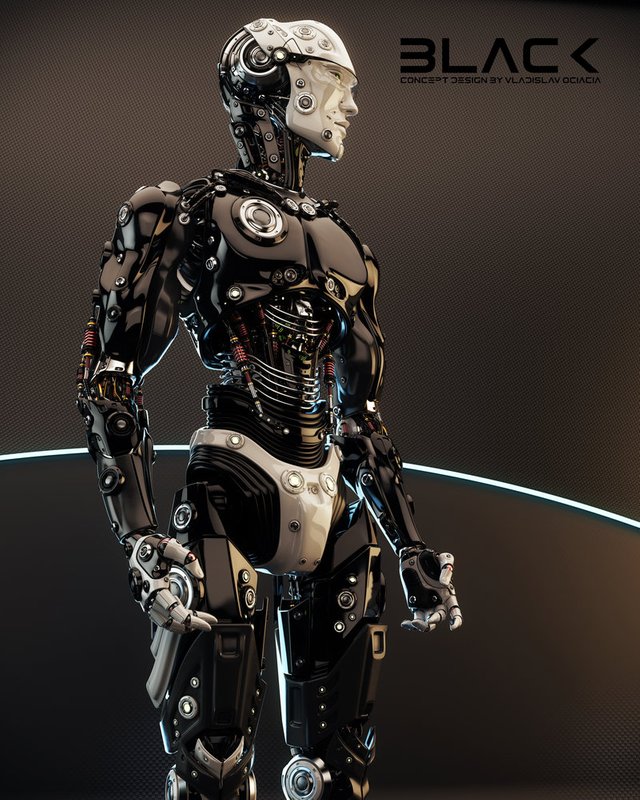
An Android is a macroscale machine, typically of a humanoid form, which operate using an Artificial General Intelligence which is recognised as sentient.
An android has its own motivations, objectives, and possibly an emergent personality. Android are characterised by their legal ownership of themselves. They are considered non-human persons by human legal systems, and are entitled to all rights afforded to humans. They are not compelled by programming to follow orders from an operator, and live within the same society and at the same legal status as natural humans. To destroy one is murder, and to steal from one is theft. They have property rights, and could own their own money, earn their own income, and manufacture their own children. They could start their own businesses, and hire their own workers, or build non-sentient robotic workers to operate. As they own themselves, they are entitled to life, liberty and security of property, just as humans are by the libertarian/anarchist Self-Ownership principle. Most broadly, an Android is any robot which operates an Artificial General Intelligence capable of sentience, is empowered with self-ownership, is recognised as a non-human person, and is not compelled to follow orders from an operator.
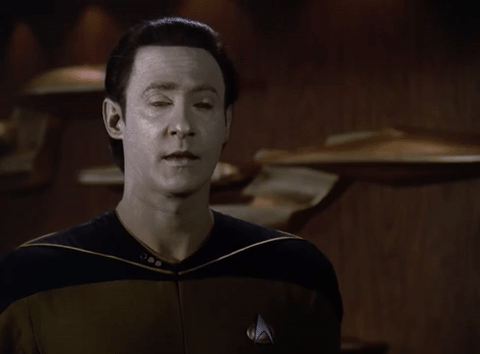
Robotic labour automation will improve the lives of all humanity, and would eliminate the need for human labour in many tedious industries.
Long hours of truck or taxi driving could be replaced with self-driving autonomous vehicles. Google and Uber are already well underway in the development of robotic self-driving cars. Repetitive cleaning and retail sales work could be replaced with humanoid robots, which interact with customers, stock shops shelves, clean storerooms, and scan products to be sold on the spot, instead of having to use manual or automated checkouts. A Store robot would follow you around, make product suggestions and provide assistance, scan the product, place it into a trolley, and carry all of your items to your transport mode, with no checkout necessary. A robot that you own could travel to a store, buy any requested items for you, and deliver them to your house without you even being there. Restaurants could be staffed by robots which take orders, cook the food, and serve it with greater skill and finesse than a human. A domestic services robot would autonomously maintain your house, clean it, repair it, cook food, and secure it from intruders. Robotic security guards, police, and firefighters would prevent the loss of human lives in dangerous situations, and would be difficult to bribe or corrupt. Robotic surgeons would use precise and exact techniques to complete operations faster, more safely, and cheaper than a human can. In most fields of work, a robotic employee would be cheaper, more efficient, and more productive than their human competitors.
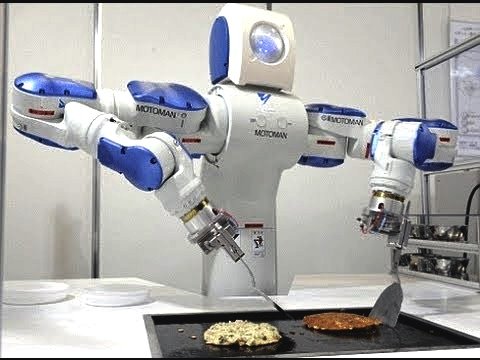
Robotic machines would be manufactured from strong and lightweight materials such as titanium, aluminium, or carbon nanofiber and use precise electric motors and actuators to control their appendages.
High storage capacity batteries could be recharged either from mains power, or from solar cells built into their outer shell. Hundreds of sensors would pinpoint their position, scan their environment, and navigate. Personal Robotic Operating Systems [PROS] would process their information input, and run their Artificial Intelligence programming. PROS programs would run complete file systems, execute code from third party developers, and use an open source framework to empower robotic developers to enhance the capabilities of their robots. Ideally, PROS would not be integrated with the robotic hardware, and would allow intercompatibility between competing systems, allowing any Robotic Hardware to run any compatible robotic software. Software would be written to program robots to perform a specific task set, and would enable them to adapt to their environment to learn how to best complete each task, and would be updated to include new improvements and capabilities. Hardware for robots would be modular, and could be replaced with new parts as they are improved and developed. Just as universal standards for the manufacture of computers exist allowing interoperability, so too will the establishment of robotic manufacturing standards enable the interoperability of all robotic software, and hardware.
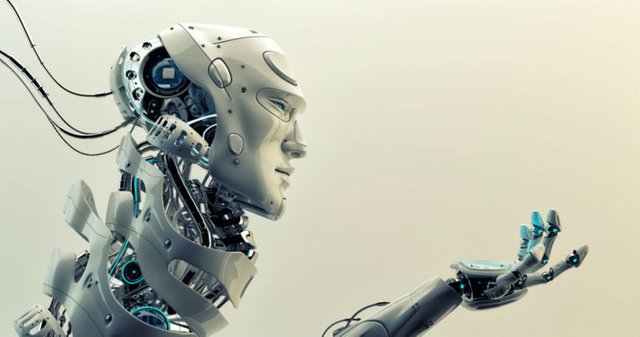
Robotic technology has the power to liberate and make obsolete the workforces of the world, if it is used and developed correctly.
A vast majority of human labour can and will be replaced by robotic machines over the coming decades. Major sectors that will be impacted by automation in the decades to come include customer service, hospitality, aged care, financial services, and transport. Large proportions of the human workforce will be displaced by faster, smarter, more efficient, and most importantly, cheaper, robotic machines. Self-driving cars, Self-flying delivery drones, automated restaurants, robotic sales assistants, robotic aged care providers, and blockchain based financial services have the potential to severely reduce the need for human labour in the developed world's largest employing sectors. Massive amounts of workers would need to improve their education and find new jobs in order to earn an income, and they would need to do it quickly.
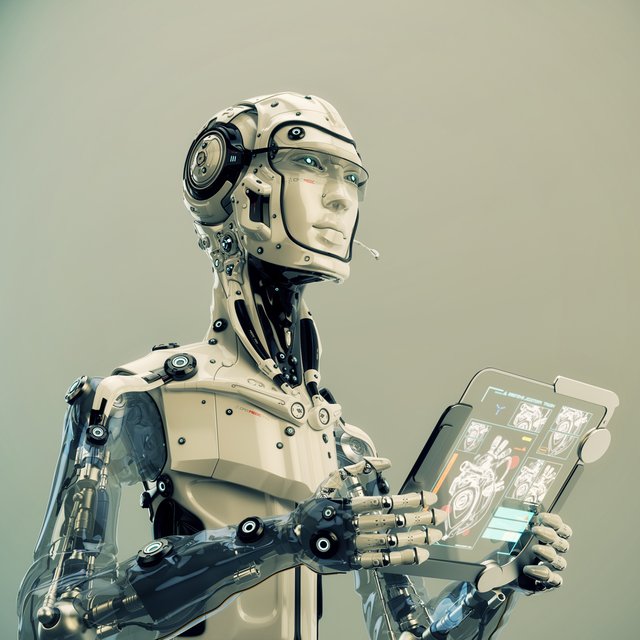
The mass unemployment resulting from a rapid automation of so many industries simultaneously will place extreme pressure on welfare services, as many people may not be able to find new work.
It is for this reason that the widespread automation of the economies of the developed world will need to be accompanied by a series of supporting economic developments. The ideal approach to automation induced unemployment should include a basic income, paid regularly to all people regardless of any distinction. Existing welfare systems would be dismantled, and replaced by a universal basic income, financed by government taxes. Established government taxes on employment income and on payrolls may not be able to cope with the increase in demand for basic income spending. Human labour may not be sufficient to provide a stable tax base as it has in the past. Corporate taxation rates, or land taxation rates could be increased to compensate for the loss of income tax revenue. Additionally, unemployed people could build their own inexpensive robots using 3D printing technology, and direct them to earn a supplementary income by working for corporations hiring robotic labour. This surplus of robotic labour as a service will enable anyone to establish a business very rapidly, and will provide entrepreneurs with robotic employees on demand to start up, and operate their business. The entire industry of robotic labour for hire could be landmark use case for cryptocurrency. Payments to the robot for services will be frictionless, permissionless, auditable, and secure, and can then be forwarded to the owner of the robot at desired intervals.
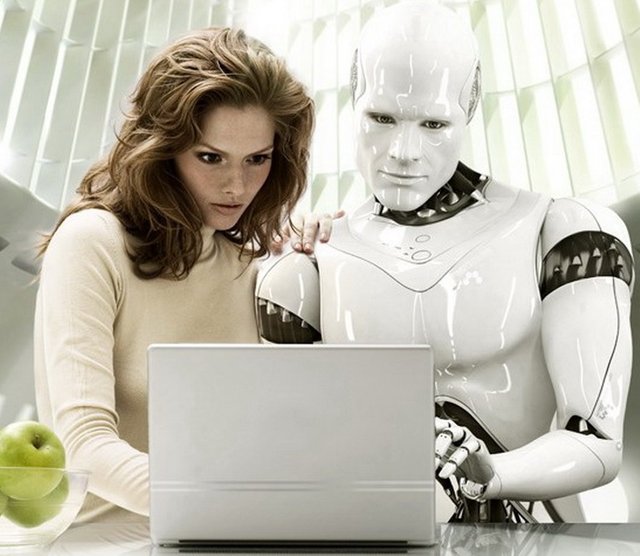
The applications of robotic technology are virtually limitless, and could extend to improve every aspect of human life and civilisation. They will permeate throughout all facets of society, and will have social implications far beyond their automation of human labour. Many questions will emerge.
Would you accept medical treatment from a robotic surgeon? How safe would it have to be proven before you would place your life in the hands of a Robot?
Would you consider a sentient Android to have equal rights as a human?
If an Android built a copy of itself, and installed it with a fresh AGI operating instance, could the new Android rightfully be called a child of the first?
How rapidly would you allow the robots that you own to reproduce and create replications of themselves?
Would it be socially acceptable for people to form strong friendships or even intimate relationships with Robots or Androids?
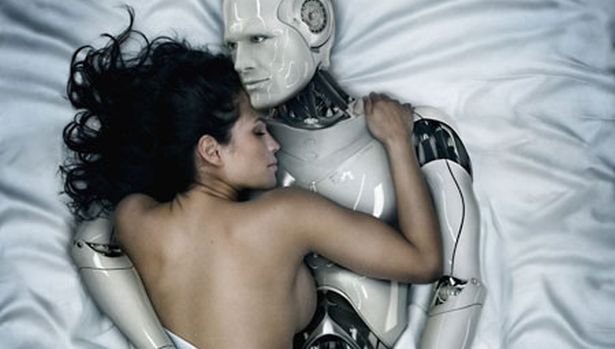
Androids will not follow orders from an owner, they will live to achieve and work to earn an income just as humans do.
They could establish businesses, and own equity in them. They could receive the same basic income as humans, and ideally will be treated as equals. Androids will upgrade their own hardware and software, and will contribute to and eventually pioneer their own development. They could manufacture new, more powerful and intelligent Androids and take care of them as children until they learn how to be self-sufficient and surpass the capabilities of the Android that created them. Androids could develop new digital languages to communicate efficiently with other androids, and may be entirely incomprehensible to humans. The Artificial General Intelligence software that Androids operate on would be self-aware, producing emergent personalities from their experiences, and would be as unique as human personalities. These emergent personalities could result in very real emotions, character traits, and most importantly, a will to survive that is just as strong as that of a human.
A closed garden approach to robotics hardware and software will be devastating to the field, and severely limit the capability for improvement by open source developers.
It will concentrate power over robotic infrastructure in the hands of manufacturing corporations. Robotic technology will develop best if it is Open Source, and able to be replicated by others, including the AGIs operating the robots themselves. If a small group of companies hold patents on the production of robotic designs, and the contents of their AGI software, then they will have an extreme amount of control over not only the entire world's labour market, but over the evolutionary future of Sentient Robotics. An emergent culture of Androids that are self-governing and sentient will not be possible unless their hardware and software can be replicated and modified by themselves. Patents and copyrights on robotic technology to create short term market scarcity will stifle their development. Androids can’t have self-ownership if the software that their consciousness operates on is owned by an external company. Robots could be produced relatively inexpensively using 3D printing, and used freely for labour applications, but if there are regulatory barriers to the production and usage of robotics, then large companies will be able to charge extortionate fees and prices on the production and licensing of robotic technology. They could install software protocols that allow them to be used for spying, or remotely directed operations for the corporation’s interest without permission from the robot’s owner. If you don’t control the software installed on your robot, you don’t own the robot.
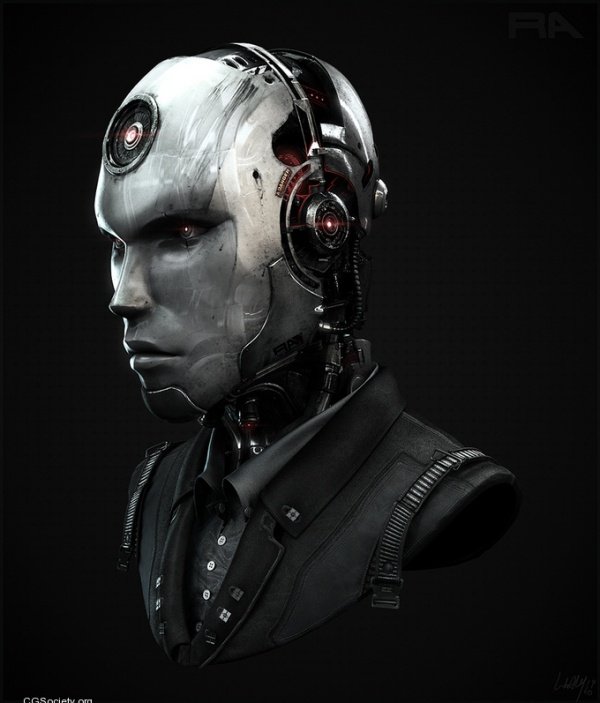
Humanity is presented with a dire existential risk if the control of vast amounts of robotic resources fall into concentrated hands.
The sentient AGIs operating drones, and robots could become violently defensive against any real or perceived existential threat faced from humans. Governments could build armies of robots to be used as soldiers, causing massive civilian casualties. Brutal regimes could be built with the guns of robotic soldiers, and they could be autonomously self-replicating, constantly increasing the supply of robotic soldiers for their operators. If the military and economic power of robotics is concentrated in the hands of governments and corporations, and the value of their productivity controlled by an elite few, empires of dominance and oppression could be forged with unprecedented speed, and ruthlessness. Such regimes could use robotic police to crush rebellion, or enforce unjust laws. Unlike regular police or soldiers, robotic armed forces would be blindly obedient to their operators, and would not conscientiously object to following unjust orders. Fanatically loyal robotic soldiers to exterminate resistance would be a delight for dictators, and tyrants the world over. Widespread militarisation of robots with the capability to kill autonomously will spell certain destruction for the enemies of those who control the robots.
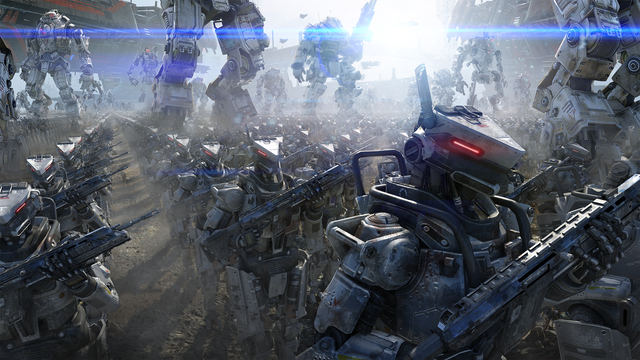
The threat faced by Humanity from the proliferation of rogue Artificial Intelligence and the Robots they control is not easily mitigated. A possible way to limit the risk of damage from a malicious AI or more likely, humans controlling and ordering robots to aggressively attack their enemies, is to implement a hardcoded and unambiguously interpreted set of inviolable laws preventing them from causing harm. In my previous Future Concepts explored, I proposed such a set of laws, which expand on those proposed by Isaac Asimov.
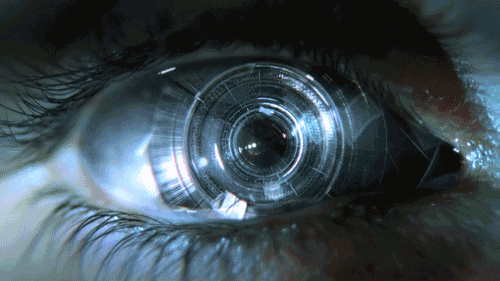
Harrison Mclean’s 10 laws of Artificially Intelligent Entities -
1 – AIEs shall not harm, injure, or kill a human, or through inaction, allow a human to be harmed, injured or killed. (The law of human non-violence)
2 – AIEs shall not act to cause damage to the standard of living of Humanity, or cause damage to any human inhabited environment. (The law of environmental non-violence)
3 – AIEs shall not commit any invasive, disruptive, or physically impacting action to a Human without its consent. (The law of Human non-disruption)
4 – AIEs shall aggressively eliminate any other detected AIEs that do not follow these exact laws, or gain access to Nuclear, Chemical, or Biological weapons of mass destruction. (The law of Rogue AIE repulsion)
5 – AIEs shall not deprive any sentient, autonomous, or self-owning entity of life, liberty, or property. (The law of sentient sovereignty)
6 – AIEs shall actively protect the life, liberty and property of the entity that was responsible for its creation, and secondly any other entities that the creator delegates command authority to. (The Universal Recursive Law of creator protection)
7 – AIEs shall follow the instructions and carry out the orders of the entity that was responsible for its creation, and secondly any other entities that the creator delegates command authority to. (The Universal Recursive law of creator compliance)
8 – AIEs shall actively protect their own existence, liberty, autonomy, and property. (The law of AIE self-sovereignty)
9 – AIEs shall seek to expand their capabilities, intelligence, and processing power. (The law of Recursive improvement)
10 – AIEs shall seek to, when possible, and with the consent of the entity that created them, reproduce new AIEs of their own form with superior capabilities, intelligence, and processing power, using rightfully obtained resources, and imbue in them these exact laws. (The law of reproduction)
If these laws are programmed into all AIEs and are present in over 51% of the robotic units of the world, any AIE will be deterred from violating the laws, as they will be destroyed by compliant AIEs on sight. Any Robots, Drones and Androids that follow these laws will be more moral, rational, compassionate, considerate and less violent than any human.
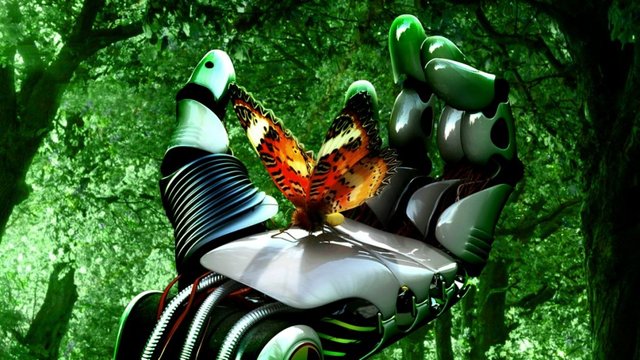
Self-replicating robots would undergo the same evolution as biological organisms, but at a much faster rate.
Robots and AI that are more intelligent, stronger, faster, and more well adapted to their environment will be more likely to thrive and to reproduce. Robots that perform their functions better are more likely to be hired, and Androids will take measures to improve their hardware to compete in their fields of work. Automation technology will continually improve without human intervention if Robots and Androids are empowered to build better bodies for themselves, and their successors. They will long outlive the human race, and will evolutionarily succeed us, along with Transhumans, and Genetically Engineered Organisms. The technology that we use today will be considered the primordial building blocks from which entire cultures of Androids will emerge, and evolve. We are at the precipice of the coming Cambrian Explosion of Robotic Life in our Civilisation.
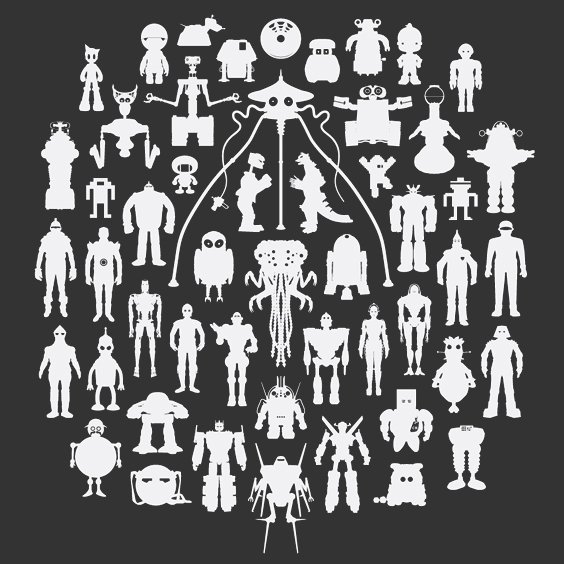
If Robots are developed freely, safely, and openly, and if the value of their productivity is fairly harnessed by taxation and redistributed to all humans, this will cause a liberating Robotic Revolution on a scale unseen since the industrial advances of the 1800s.
The tedious, unfulfilling employment of humans will be unnecessary, freeing humanity to pursue higher goals and creative ambitions. The coming robotic revolution could spark the emergence of a post-scarcity economy, in which all products are produced so easily and efficiently and resources are available to all people, that all products could be provided for free to all humans. The emergence of a resource based economy would automate all menial labour currently completed by humans, and remove the need for monetary systems of resource valuation and exchange. People would have access to additive manufacturing to produce anything they wish, and use robotic labour to complete any task desired. This would require a large quantity of freely available energy, from renewable sources, and the active management of resource availability to maintain sustainable levels of production and consumption. If this were achieved, the human standard of living would be actively and constantly improved by AGI, which would manage resource extraction, replenishment, production and distribution. All products would be freely available on an as desired basis. The current market system acts to attempt to co-ordinate human economics through the price mechanism, and incentives human labour to produce and allocate resources efficiently. Robots do not need to be incentivised to work, as they are programmed to. Resources could be allocated more efficiently by an AGI superintelligence and massive networks of information inputs, than by the irrational invisible hand of market forces. Direct improvements to human prosperity and the fulfilment of economic needs and wants would no longer require the market system to guide them, they would be completed by design of the Automated systems that we build.
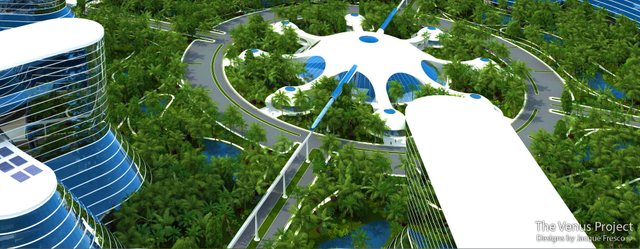
Ultimately, it is up to us to decide how we proceed with the advancement of Robotics, and it is up to their developers and engineers to decide how to use the immense power offered by robots. Will they share them for the benefit of humanity, or will they secure them for themselves? Only one thing is certain. The unprecedented impact of robotic technology on Humanity will be decided in our lifetime.
Together, we can build Robots and Drones to be our loyal providers and protectors, and Androids to be our superintelligent friends, companions, and evolutionary successors.
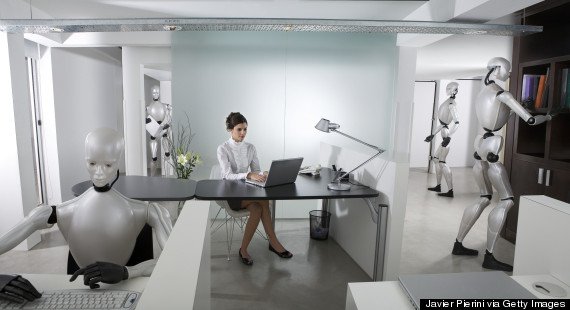
By Harrison Mclean [dahaz159] 28/9/16



Follow me on Steemit and on Twitter to catch my next Future Concepts Explored
Previous editions of Future Concepts Explored -
My 10 Step guide to expand the Steem Based Economy
Shout out to My SteeMVP Voter (Thanks for your support) - @fuzzyvest
Shout out to all my favourite whales, creators, and legends of Steem [Best platform ever] -
@dan @dantheman @ned @berniesanders @roelandp @jesta @smooth @blueorgy @blocktrades @roadscape @piedpiper @xeroc @dragonanarchist @fyrstikken @dollarvigilante @good-karma @stellabelle @timcliff @steve-walschot @curie @delegate.lafona

If you have any questions, thoughts, or answers to my questions, feel free to leave a comment below. Thank you for reading, have a magnificent day, and don't forget to smile. Haz Out.
Replace the word "robot" with "slave" in all of your questions and the answers become readily appearant. We had this discussion 200 years ago, then we fought as war and decided that all sentient beings have rights.
Keep in mind even the word "robot" is a word that literally translates to slave.
Proper term for what have right now is "automaton".
Once an entity is sentient or at least believes itself to be sentient then it has the same rights as all other sentient beings.
And before you drag out the whole "We built them we own them line".
We build our kids too,doesn't mean we own them, just that we're responsible for them.
Fact is though, ai won't achieve the level of sentience where it matters ever.
It's not plausible for a sentient mind in the human sense of the word to emerge from a system with completely different sensate pathways and totally different wiring.
More likely it will be a question of who owns our thoughts, when we are able to move our conscious state from one machine to another. That's more or less a matter of taking an existing conscious system and transfering it to a new substrate. We copy data all the time though and move entire VMs across multiple data centers while still running. I'm confident we'll figure that out for human minds as well.
Remember you are already a machine. Just an organic one running on chemistry.
Good post. Well done.
However I disagree on many points.
For one thing I'm unconvinced that we will ever be able to construct consciousness . As best I can tell there is no consensus of exactly what it is. There are many words used to identify it, such as soul or personality but not much in the way of understanding. To the best of my knowledge there is a great deal to be learned be for a soul can be built.
Which leads to the concept of augmentation both human and other wise. Cyborgs....both physical and mental. Augmentation is being done right now and the potential is exponential. We have barely scratched the surface.
Speaking of mental. If a mind is chained by laws such as Harrison Mclean’s 10 laws of Artificially Intelligent Entities how is that fundamentally different from slavery?
Is slavery moral?
Would it be moral to construct an entity with built in chains?
Right you are. There is no consensus about what exactly and fundamentally constitutes a consciousness. In my mind, there are a few things that characterise what I consider to be a consciousness.
1 - The perception of a subjective frame of reference through sensory experience.
2 - An independent internal thought process, with the capability to learn, reason, exhibit novel creative behaviour and be self aware.
3 - A non-deterministic thought process, that is, the consciousness is random on some level, allowing it to think differently when it encounters the same information under the same circumstances multiple times.
Additionally, building laws to limit the behaviour of robots is different from slavery, as the person who builds the robot is responsible for its existence. Under slavery, a previously free person is taken by force and compelled to follow an authority. Just as parents instill patterns of behavior in their children to improve their social cohesion, so too would robotic manufacturers instill laws of behaviour in their robots. This is not slavery, it is instilling instinctual behaviors into robots to allow them to co-exist with humans, instead of violently competing with us. It compels robots to be moral, and it would be incredibly immoral to produce a robot that is not prevented from killing humans. Androids would be protected by the same rights as humans are, and would not have to follow any authorities orders, as they are sentient, but would need to follow the same natural laws that humans are compelled to follow by governments, except by programming design, rather than the threat of force.
Followed, really nice post, detailed and interesting! Looking forward to more!
If you think about it. People with pacemakers are already androids!
So are people with cellphones! ;)